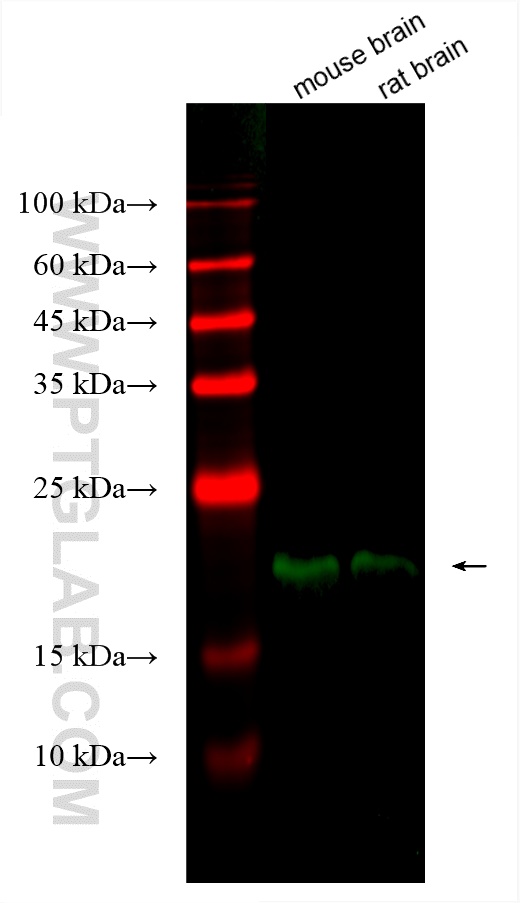验证数据展示
经过测试的应用
| Positive WB detected in | mouse brain tissue, rat brain tissue |
| Positive FC (Intra) detected in | SH-SY5Y cells |
推荐稀释比
| 应用 | 推荐稀释比 |
|---|---|
| Western Blot (WB) | WB : 1:500-1:1000 |
| Flow Cytometry (FC) (INTRA) | FC (INTRA) : 0.80 ug per 10^6 cells in a 100 µl suspension |
| It is recommended that this reagent should be titrated in each testing system to obtain optimal results. | |
| Sample-dependent, Check data in validation data gallery. | |
产品信息
CL488-10506 targets NCS1 in WB, FC (Intra) applications and shows reactivity with human, mouse, rat samples.
| 经测试应用 | WB, FC (Intra) Application Description |
| 经测试反应性 | human, mouse, rat |
| 免疫原 | NCS1 fusion protein Ag0784 种属同源性预测 |
| 宿主/亚型 | Rabbit / IgG |
| 抗体类别 | Polyclonal |
| 产品类型 | Antibody |
| 全称 | frequenin homolog (Drosophila) |
| 别名 | FREQ, FLUP, Frequenin-like protein, Frequenin like protein, frequenin homolog (Drosophila) |
| 计算分子量 | 22 kDa |
| 观测分子量 | 22 kDa |
| GenBank蛋白编号 | BC004856 |
| 基因名称 | NCS1 |
| Gene ID (NCBI) | 23413 |
| RRID | AB_3672448 |
| 偶联类型 | CoraLite® Plus 488 Fluorescent Dye |
| 最大激发/发射波长 | 493 nm / 522 nm |
| 形式 | Liquid |
| 纯化方式 | Antigen affinity purification |
| UNIPROT ID | P62166 |
| 储存缓冲液 | PBS with 50% glycerol, 0.05% Proclin300, 0.5% BSA , pH 7.3 |
| 储存条件 | Store at -20°C. Avoid exposure to light. Stable for one year after shipment. Aliquoting is unnecessary for -20oC storage. |
背景介绍
NCS1 is a member of the neuronal calcium sensor gene family. It regulates G protein-coupled receptor phosphorylation in a calcium-dependent manner and can substitute for calmodulin. The protein is associated with secretory granules and modulates synaptic transmission and synaptic plasticity.
实验方案
| Product Specific Protocols | |
|---|---|
| WB protocol for CL Plus 488 NCS1 antibody CL488-10506 | Download protocol |
| Standard Protocols | |
|---|---|
| Click here to view our Standard Protocols |

